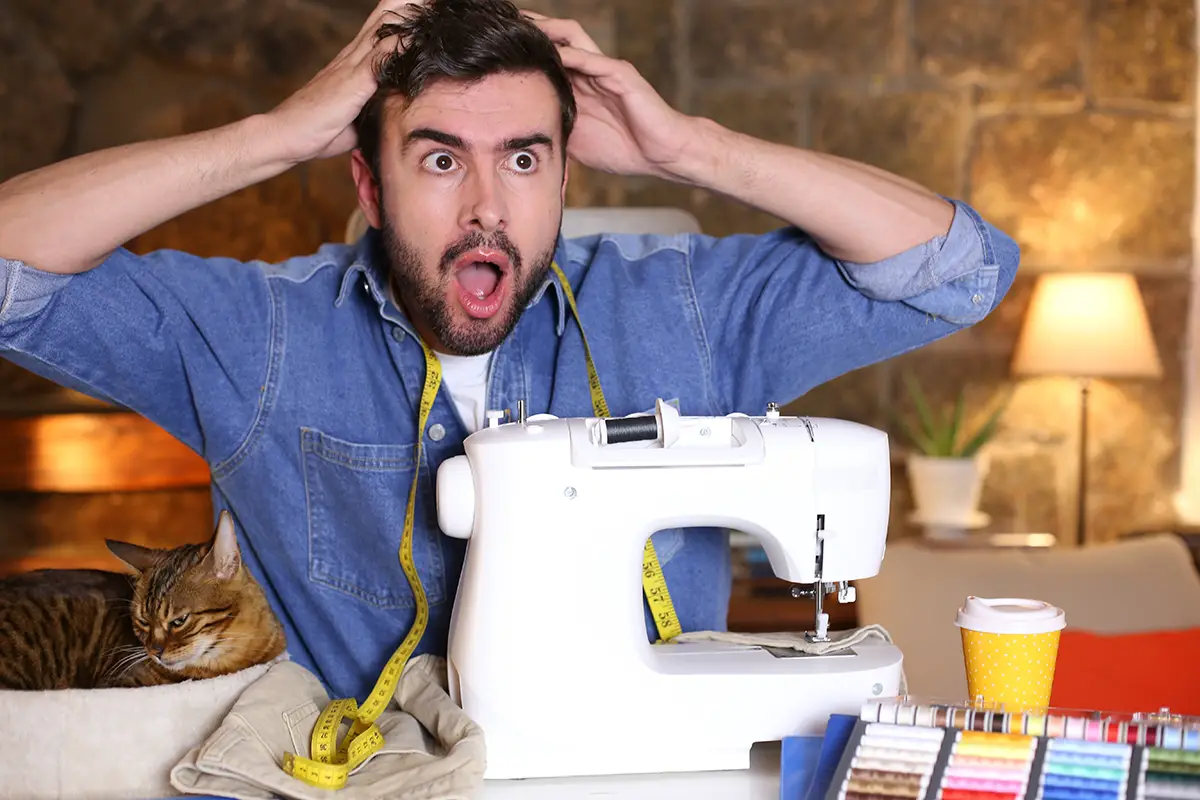Picture the scene – you have nearly finished your finest piece of work. It has taken you months of hard work and for some reason, the thread keeps breaking on your machine. You need to get to the bottom of the problem. Let us tell you how.
The good news is that there will be a solution to this annoying problem. The bad news is that your nimble fingers are probably to blame in the first place. In almost all cases persistent thread breaking can be put down to human error. It might be that you haven’t set up the machine properly or that you have chosen the wrong elements – the wrong needle or the wrong thread for example.
What Causes Thread to Break?
Here are some of the most common causes of broken threads. Check out the list and see if any of these might be relevant to your case:
1. Cheap thread
Cheap thread can be a double-edged sword. It might be plentiful but its durability and strength will be poor and will only lead to headaches. It might be that you are on a bad spooI. If you are in the middle of a massive project and have not encountered any problems like this until now it is definitely worth doing this and seeing if it makes a difference. Otherwise, go out to a fabric store and pick up some higher quality thread in the same colour.
2. Badly wound bobbin
If it’s the lower thread that keeps snapping, look to your bobbin. Poor maintenance and lazy shortcuts will catch up with you in the end! For every project, you should start with an empty, clean bobbin. Never keep the old thread or old pieces of lint in the case – they will just obstruct and test the strength of the new thread.
3. Unsuitable needles
Look closely at your needle, and particularly, at the eye. It is possible that the eye may be rough, with sharp edges that cut the thread before it has a chance to do its job. Alternatively, the problem may be that the needle is too small for the thread you are using. The more you try and force the thread throw, the more likely it is that it will snap and cause you problems.
4. Incorrect threading
Have a look at the thread path and make sure that it isn’t caught on the spool or any other area of the machine. It should run smooth, without obstruction. If there is anything at all in the way, get rid of it!
5. Incorrect tension
Tension affects how tightly your thread is pulled through the machine, and if it’s too high, your thread will snap. Make sure your tension discs are in the correct position for your thread. If your thread is wide, it will need to be adjusted so that the thread flows through when you start sewing.
6. Needle in backwards
You have been sewing for a while and you wouldn’t possibly make such an obvious mistake, but trust us, it does happen. If your needle is in backwards it will cause obvious havoc and will definitely lead to breakage. Just check it and rule it out as a possible cause of snagging.
Recap on the Causes of Broken Threads
There are a host of causes for broken threads. It’s important to get to the bottom of this so check everything, and that includes the position of your needle! We can guarantee that the broken thread will be down to at least one of the above!

